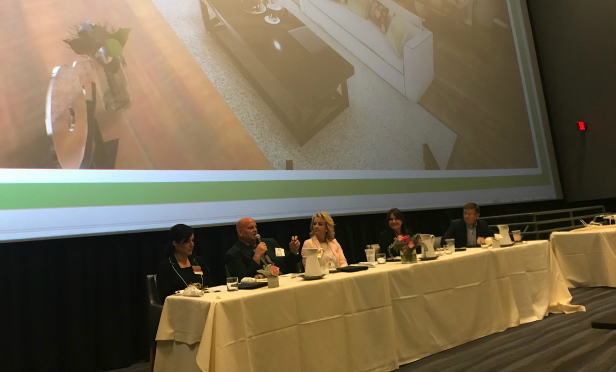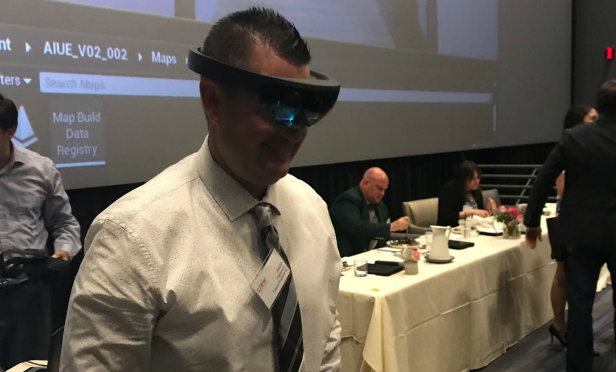 There is new technology that is set to completely disrupt the design and development process for commercial real estate. At CREW San Diego's event this week, architects, developers and engineers spoke about the new technologies they are using to today that are changing development. The panel included Pat Fuscoe, founder and CEO at Fuscoe Engineering, Megan Lubaszka regional creative media leader at Gensler, Jason Wood, project principal at Cisterra, Katerina Milovanoska, senior VDC and BIM Manager at Rudolph & Sletten, and moderator Darcy Miramontes, EVP at JLL.
There is new technology that is set to completely disrupt the design and development process for commercial real estate. At CREW San Diego's event this week, architects, developers and engineers spoke about the new technologies they are using to today that are changing development. The panel included Pat Fuscoe, founder and CEO at Fuscoe Engineering, Megan Lubaszka regional creative media leader at Gensler, Jason Wood, project principal at Cisterra, Katerina Milovanoska, senior VDC and BIM Manager at Rudolph & Sletten, and moderator Darcy Miramontes, EVP at JLL.
Lubaszka kicked off the event by showing the audience Gensler's virtual reality technology. She brought headgear for the audience to experience virtual reality. Milovanoska, on the other hand, talked about digital 3D models and how those models could be used to conceptualize a project before development. However, the most revolutionary technology came from Fuscoe, who discussed his proprietary patent-pending technology that uses drones to scan a development site with how-powered cameras to produce a 3D model that is within a half-inch of accuracy. Fuscoe says that the technology is one of the most disruptive that he has seen in his 50-year career.
“I showed a patent-pending technology that we have using cameras to photograph a real estate property or building,” Fuscoe tells GlobeSt.com in an interview following the panel. “It is a scan, like a laser, and turn it into a 3d model with half-inch accuracy. That is disruptive. I have been in this business 50 years, and I have seen two or three major disruptive changes in 50 years, and I think this is the biggest.”
The technology is called Optical Capture, and Fuscoe's firm developed it a year ago. He says that the applications are vast, including everything from site surveys to maps of piping during development. For that reason, Fuscoe calls it “magic,” adding that it hits all three requirements for disruption: it is faster, better quality and cheaper. “We fly drones around a building, scan it and turn it into a 3D model,” he says. “We can take that point cloud, which is kind of useless on its own, and convert it into AutoCAD or Revit so you can use it. It is faster, better and cheaper.”
So far, Fuscoe's clients have largely been developers, but he is hopeful that architects will see the benefit soon. “The audience was mesmerized. It is like showing someone a smartphone in 1970,” he says about showing it to the audience at CREW San Diego. “Most people react sort of numb. Architects in particular are threatened by it. Some people run from it, but about 20% of the audience members run to it. Builders and developers love this. I showed it to the Irvine Co., and they went all in. Most every builder or developer that we show this to bites right away.”
© Touchpoint Markets, All Rights Reserved. Request academic re-use from www.copyright.com. All other uses, submit a request to [email protected]. For more inforrmation visit Asset & Logo Licensing.







